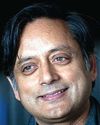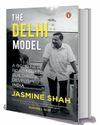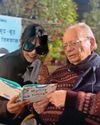
Surbhi Gupta was in a race against time outside New York’s Nassau County International Cricket Stadium. Team India’s presser after its campaign opener against Ireland was over and Rohit Sharma’s men were on the way out. She had a few minutes to find the perfect spot to watch them boarding the team bus.
She did find a spot a little away from the crowd. Apart from a middle-aged guard hired by the stadium management, she was largely alone as she waited. “Maybe your main man has left in a car or something...,” the guard said. Having seen Rohit and Virat Kohli board the bus after a warm-up game at the same venue a few days prior, Gupta knew that was not the case. She told him the “main man” and his buddies would be out soon.
“You know, the FBI is here... these guys should be such stars,” said Taylor (name changed), amused by the craze. Gupta confirmed they were indeed celebrities back home and the security would only be tightened further for the India-Pakistan contest. “Sad I would not be on duty for that game,” he said. “Maybe I will tune in from home. But what’s the point, I don’t get the rules.”
Taylor, like most Americans today, is unaware that Benjamin Franklin had brought a copy of 1774 Laws, the then official rule book of cricket, to the US in 1754, 38 years ahead of the formation of India’s first cricket club in Calcutta. It is also unlikely that they know that when the USA met Canada for the first recorded international cricket game in New York’s St George’s Club (Sep 24-26, 1844), the first summer Olympics of modern history was still 52 years away.
The US is not a land yet to embrace cricket, as most think. Rather, it was a pioneer of the game, which attracted American spectators in thousands two centuries ago.
Esta historia es de la edición June 23, 2024 de THE WEEK India.
Comience su prueba gratuita de Magzter GOLD de 7 días para acceder a miles de historias premium seleccionadas y a más de 9,000 revistas y periódicos.
Ya eres suscriptor ? Conectar
Esta historia es de la edición June 23, 2024 de THE WEEK India.
Comience su prueba gratuita de Magzter GOLD de 7 días para acceder a miles de historias premium seleccionadas y a más de 9,000 revistas y periódicos.
Ya eres suscriptor? Conectar

Forging the future
As the curtain falls on 2024, I take pride in the extraordinary milestones achieved under the leadership of Prime Minister Narendra Modi. This year stands as a testament to the Modi government's resolve to forge a resilient and forward-looking Bharat. From groundbreaking advancements in infrastructure to visionary global initiatives, these efforts resonate deeply with the vision of Viksit Bharat.

Our strange democracy
Abraham Lincoln is lauded as among the very best presidents the US ever had: the statesman par excellence successfully steered the nation through the devastating and perilous years of the American civil war. Not only did Lincoln manage to keep his country united, he also ensured the passage of the 13th amendment to the US constitution, which abolished slavery.

Five years of post-pandemic fashion
It has been five years since we discovered what Covid-19 was, and five years since it disrupted the world forever. The World Health Organization activated their emergency systems on January 1, 2020, and informed the world by January 4, 2020. By the end of that week, they had set guidelines for various countries to follow. Comparable to the Spanish flu of 1918, more than 7 million people have died of Covid according to official data. Unofficially, no one has an idea. WHO has just this week asked China to provide critical data to understand the virus's origins as a “moral and scientific imperative”.

Community spirit
Rhythm of Dammam opens a window to the world of African-origin Siddis of Uttara Kannada

'Breaking' down a scandal
Society Girl is not just a case study of a high-profile death in Pakistan but also a stark commentary on media trials

Progress card
Jasmine Shah's book tells you what the AAP has achieved in Delhi in the last 10 years

SENSE IN NONSENSE
In his latest book of poetry, Ruskin Bond is at his funniest

Get ready for Trump bump
The ‘butterfly effect’ is a beautiful, mysterious metaphor of the planet’s interconnectedness.

QUIET FLOWS THE FAITH
The melding of an ancient amorphous faith and the latest science; of an antique tradition and new practices; ways of life older than memory and new expressions is happening at Prayagraj in Uttar Pradesh.

Trash to treasure
How a weed-choked Dal Lake spurred Maninder Singh's journey to become a waste management visionary